A Trip to the Moon (French: Le Voyage dans la Lune) is a 1902 French adventure film directed by Georges Méliès. Inspired by a wide variety of sources, including Jules Verne's novels From the Earth to the Moon and Around the Moon, the film follows a group of astronomers who travel to the Moon in a cannon-propelled capsule, explore the Moon's surface, escape from an underground group of Selenites (lunar inhabitants), and return to Earth with a captive Selenite. It features an ensemble cast of French theatrical performers, led by Méliès himself in the main role of Professor Barbenfouillis, and is filmed in the overtly theatrical style for which Méliès became famous.
| A Trip to the Moon | |
|---|---|
Title card | |
| Directed by | Georges Méliès |
| Produced by | Georges Méliès |
| Written by | Georges Méliès |
| Based on | From the Earth to the Moon and Around the Moon by Jules Verne (see also Inspirations section below) |
| Starring |
|
| Cinematography |
|
Production company | Star Film Company |
Release date |
|
Running time |
|
| Country | France |
| Language | Silent |
| Budget | ?10,000 |
The film was an internationally popular success on its release, and was extensively pirated by other studios, especially in the United States. Its unusual length, lavish production values, innovative special effects, and emphasis on storytelling were markedly influential on other film-makers and ultimately on the development of narrative film as a whole.
Scholars have commented upon the film's extensive use of pataphysical and anti-imperialist satire, as well as on its wide influence on later film-makers and its artistic significance within the French theatrical féerie tradition. Though the film disappeared into obscurity after Méliès's retirement from the film industry, it was rediscovered around 1930, when Méliès's importance to the history of cinema was beginning to be recognized by film devotees. An original hand-colored print was discovered in 1993 and restored in 2011.
A Trip to the Moon was named one of the 100 greatest films of the 20th century by The Village Voice, ranked 84th. The film remains the best-known of the hundreds of films made by Méliès, and the moment in which the capsule lands in the Moon's eye remains one of the most iconic and frequently referenced images in the history of cinema. It is widely regarded as the earliest example of the science fiction film genre and, more generally, as one of the most influential films in cinema history.
Screenplay
At a meeting of the Astronomic Club, its president, Professor Barbenfouillis, proposes an expedition to the Moon. After addressing some dissent, five other brave astronomers—Nostradamus, Alcofrisbas, Omega, Micromegas, and Parafaragaramus—agree to the plan. They build a space capsule in the shape of a bullet, and a huge cannon to shoot it into space. The astronomers embark and their capsule is fired from the cannon with the help of "marines", most of whom are played by a bevy of young women in sailors' outfits. The Man in the Moon watches the capsule as it approaches, and it hits him in the eye.
Landing safely on the Moon, the astronomers get out of the capsule without the need of space suits and watch the Earth rise in the distance. Exhausted by their journey, they unroll their blankets and sleep. As they sleep, a comet passes, the Big Dipper appears with human faces peering out of each star, old Saturn leans out of a window in his ringed planet, and Phoebe, goddess of the Moon, appears seated in a crescent-moon swing. Phoebe causes a snowfall that awakens the astronomers, and they seek shelter in a cavern where they discover giant mushrooms. One astronomer opens his umbrella; it promptly takes root and turns into a giant mushroom itself.
At this point, a Selenite (an insectoid alien inhabitant of the Moon, named after one of the Greek moon goddesses, Selene) appears, but it is killed easily by an astronomer, as the creatures explode if they are hit with force. More Selenites appear and it becomes increasingly difficult for the astronomers to destroy them as they are surrounded. The Selenites capture the astronomers and take them to the palace of their king. An astronomer lifts the Selenite King off his throne and throws him to the ground, causing him to explode.
The astronomers run back to their capsule while continuing to hit the pursuing Selenites, and five get inside. The sixth astronomer, Barbenfouillis himself, uses a rope to tip the capsule over a ledge on the Moon and into space. A Selenite tries to seize the capsule at the last minute. Astronomer, capsule, and Selenite fall through space and land in an ocean on Earth, where they are rescued by a ship and towed ashore. The final sequence (missing from some prints of the film) depicts a celebratory parade in honor of the travelers' return, including a display of the captive Selenite and the unveiling of a commemorative statue bearing the motto "Labor omnia vincit".
When A Trip to the Moon was made, film actors performed anonymously and no credits were given; the practice of supplying opening and closing credits in films was a later innovation. Nonetheless, the following cast details can be reconstructed from available evidence:
- Georges Méliès as Professor Barbenfouillis. Méliès, a pioneering French film-maker and magician now generally regarded as the first person to recognize the potential of narrative film, had already achieved considerable success with his film versions of Cinderella (1899) and Joan of Arc (1900). His extensive involvement in all of his films as director, producer, writer, designer, technician, publicist, editor, and often actor makes him one of the first cinematic auteurs. Speaking about his work late in life, Méliès commented: "The greatest difficulty in realising my own ideas forced me to sometimes play the leading role in my films ... I was a star without knowing I was one, since the term did not yet exist." All told, Méliès took an acting role in at least 300 of his 520 films.
- Bleuette Bernon as Phoebe (the woman on the crescent moon). Méliès discovered Bernon in the 1890s, when she was performing as a singer at the cabaret L'Enfer. She also appeared in his 1899 adaption of Cinderella.
- François Lallement as the officer of the marines. Lallement was one of the salaried camera operators for the Star Film Company.
- Henri Delannoy as the captain of the rocket.
- Jules-Eugène Legris as the parade leader. Legris was a magician who performed at Méliès's theater of stage illusions, the Théâtre Robert-Houdin in Paris.
- Victor André, Delpierre, Farjaux, Kelm, and Brunnet as the astronomers. André worked at the Théâtre de Cluny; the others were singers in French music halls.
- Ballet of the Théâtre du Châtelet as stars and as cannon attendants.
- Acrobats of the Folies Bergère as Selenites.
Inspiration
When asked in 1930 what inspired him for A Trip to the Moon, Méliès credited Jules Verne's novels From the Earth to the Moon (1865) and Around the Moon (1870). Cinema historians, the mid-20th-century French writer Georges Sadoul first among them, have frequently suggested H. G. Wells's The First Men in the Moon (1901), a French translation of which was published a few months before Méliès made the film, as another likely influence. Sadoul argued that the first half of the film (up to the shooting of the projectile) is derived from Verne and that the second half (the travelers' adventures on and in the moon) is derived from Wells.
In addition to these literary sources, various film scholars have suggested that Méliès was heavily influenced by other works, especially Jacques Offenbach's operetta Le voyage dans la lune (an unauthorized parody of Verne's novels) and the A Trip to the Moon attraction at the 1901 Pan-American Exposition in Buffalo, New York. The French film historian Thierry Lefebvre hypothesizes that Méliès drew upon both of these works, but in different ways: he appears to have taken the structure of the film—"a trip to the moon, a moon landing, an encounter with extraterrestrials with a deformity, an underground trek, an interview with the Man in the Moon, and a brutal return to reality back on earth"—directly from the 1901 attraction, but also incorporated many plot elements (including the presence of six astronomers with pseudo-scientific names, telescopes that transform into stools, a moonshot cannon mounted above ground, a scene in which the moon appears to approach the viewer, a lunar snowstorm, an earthrise scene, and umbrella-wielding travelers), not to mention the parodic tone of the film, from the Offenbach operetta.
Filming
As the science writer Ron Miller notes, A Trip to the Moon was one of the most complex films that Méliès had made, and employed "every trick he had learned or invented". It was his longest film at the time; both the budget and filming duration were unusually lavish, costing ?10,000 to make and taking three months to complete. The camera operators were Théophile Michault and Lucien Tainguy, who worked on a daily basis with Méliès as salaried employees for the Star Film Company. In addition to their work as cameramen, Méliès's operators also did odd jobs for the company such as developing film and helping to set up scenery, and another salaried operator, François Lallement, appeared onscreen as the marine officer. By contrast, Méliès hired his actors on a film-by-film basis, drawing from talented individuals in the Parisian theatrical world, with which he had many connections. They were paid
Watch movie Le Voyage Dans La Lune online on Amazon
Watch movie Le Voyage Dans La Lune online
Watch The Movie On PrimeAakhri Adaalat Full HD Movie Download

Sampoorna Ramayana Full HD Movie Download

Michael Madana Kamarajan Full HD Movie Download

Lal Patthar Full HD Movie Download

Sanam Bewafa Full HD Movie Download

Chase Full HD Movie Download

Key Club Full HD Movie Download
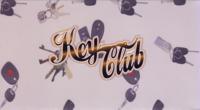
Lakhon Mein Ek (1971) Full HD Movie Download
.jpg)
Nastik (1954) Full HD Movie Download
.jpg)
New Delhi Full HD Movie Download
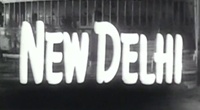
Naukar Full HD Movie Download

Sri Raghavendra Full HD Movie Download

Amma Durgamma Full HD Movie Download
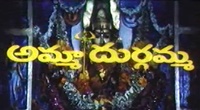
Atma Katha Full HD Movie Download
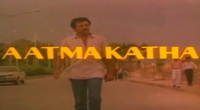
Pooveli Full HD Movie Download

Superman Returns Full HD Movie Download

Maha Purushudu Full HD Movie Download
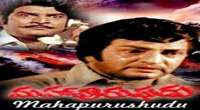
Muthayamantha Muddu Full HD Movie Download

Shena Full HD Movie Download
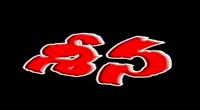
Indhu Full HD Movie Download

Mere Brother Ki Dulhan Full HD Movie Download

Download latest Movie from bollywood
- 1> baaghi 3
- 2> THE SKY IS PINK MOVIE FULL STORY AND REVIEW
- 3> Luka Chuppi
- 4> TO ALL THE BOYS I’VE LOVED BEFORE
- 5> Kabir Singh
- 6> Street Dancer 3D
- 7> Simmba
- 8> Gone Girl
- 9> The Girl Who Lived
- 10> Ludo
- 11> DILWALE DULHANIA LE JAYENGE
- 12> GUILTY
- 13> The Godfather
- 14> Adventures of Rusty
- 15> Sooryavanshi
- 16> Satyameva Jayate 2
- 17> Thappad
- 18> Bhool Bhulaiyaa 2
- 19> KGFChapter 2
- 20> Mardaani 2
- 21> Pinjar
- 22> Shivaji maharaj
- 23> Ek Villian 2
- 24> Hungama 2
- 25> Divergent
- 26> Mumbai Saga
- 27> The Internship
- 28> HIT (telugu)
- 29> Panga
- 30> The perfect date
- 31> 16 December
- 32> Gopala Gopala (Telugu)
- 33> Brahmastra
- 34> Gangubai Kathiawadi
- 35> Manmadhudu
- 36> Nenu local
- 37> Mahanati
- 38> Shatamanam bavathi
- 39> Lagaan
- 40> After
- 41> MOM
- 42> Shamshera
- 43> Raguvaran BTech
- 44> Khakee
- 45> The villain
- 46> OM
- 47> Mr. perfect
- 48> Bueatifull mind
- 49> Hichki
- 50> Gabbar Singh
- 51> Jogi
- 52> Before Sunrise
- 53> Before Sunset
- 54> Before Midnight
- 55> The Big Bull
- 56> Top Gun: Maverick
- 57> The Purge
- 58> The Sky is Pink
- 59> Laxmmi Bomb
- 60> Sadak 2
- 61> Sufna
- 62> Prithviraj
- 63> PK
- 64> Coolie No 1(2020)
- 65> Black Widow
- 66> Dear Zindagi
- 67> Dil Bechara
- 68> PHIR HERA PHERI
- 69> WAR
- 70> Dostana
- 71> RRR: Roudram Ranam Rudhiram
- 72> Maidan
- 73> Dabbang 3
- 74> Chhalaang
- 75> life as we know it
- 76> SherShaah
- 77> Sandeep Aur Pinky Faraar
- 78> Event Horizon
- 79> 83
- 80> Radhe: Your Most Wanted Bhai
- 81> Gunjan Saxena: The Kargil Girl
- 82> Mr India
- 83> Vivah
- 84> Anokha Bandhan
- 85> Ghost
- 86> Bhoot: Part One - The Haunted Ship
- 87> Haseen Dilruba
- 88> Laal Singh Chaddha
- 89> Qismat
- 90> Rajput
- 91> Drive
- 92> Dil Chahta Hai
- 93> Dil Ki Baazi
- 94> Dil Ka Rishta
- 95> Teesri Manzil
- 96> Dil
- 97> Love Aaj Kal
- 98> Khaali Peeli
- 99> Bunty Aur Babli 2
- 100> Atrangi Re
- 101> Gulabo Sitabo
- 102> Jodi
- 103> Suraj Pe Mangal Bhari
- 104> Deewana
- 105> Attack
- 106> Sardar Udham Singh
- 107> Toofan
- 108> THE LOVEBIRDS
- 109> Jersey
- 110> Ginny Weds Sunny
- 111> Thalaivi
- 112> Shiddat
- 113> Angels vs Zombies
- 114> Koi Mil Gya
- 115> Thank God
- 116> Bhuj: The Pride of India
- 117> Hum Aapke Hain Kaun
- 118> The Platform
- 119> Bird Box
- 120> Roohi Afzana
- 121> Torbaaz
- 122> Nikamma
- 123> World War Z
- 124> Extraction
- 125> Train to Busan
- 126> Life of Pi
- 127> SHAADI MEIN JROOR AANA
- 128> Himmat Aur Mehnat
- 129> To All The Boys: P.S. I Still Love You
- 130> Mimi
- 131> Good Newwz
- 132> Shubh Mangal Zyada Saavdhan
- 133> Raabta
- 134> Harry Potter and the Philosopher's Stone
- 135> Harry Potter and the Chamber of Secrets
- 136> Chhapaak
- 137> War of the Worlds
- 138> Harry Potter and the Prisoner of Azkaban
- 139> Harry Potter and the Goblet of Fire
- 140> MURDER MYSTERY
- 141> Shakuntala Devi
- 142> Bachchan Pandey
- 143> Jayeshbhai Jordar
- 144> Sheer Qorma
- 145> Saina
- 146> 'O' Pushpa I hate tears
- 147> Kedarnath
- 148> MS Dhoni The Untold Story
- 149> Chhichhore
- 150> Badhaai Ho
- 151> Unstoppable
- 152> Oz the Great And Powerful
- 153> The Girl on the Train
- 154> Haathi Mere Saathi 2020
- 155> The Conjuring: The Devil Made Me Do It
- 156> Gandhi Se Pehle Gandhi
- 157> The Song of Scorpions
- 158> Srimanthudu
- 159> Hello Guru Prema Kosame
- 160> Beauty and The Beast
- 161> Black Panther
- 162> Charlie and the Chocolate Factory
- 163> Bole Chudiyan
- 164> Fidaa
- 165> Duvvada Jagannadham
- 166> Bruce Lee: The Fighter
- 167> Hyper
- 168> Yaara
- 169> Red (2020)
- 170> Shivam
- 171> That Is Mahalakshmi
- 172> Nishabdham
- 173> Aashram 2020 web series
- 174> Laxmii
- 175> Mismatched
- 176> STUDENT OF THE YEAR 2
- 177> NAIL POLISH
- 178> Ramprasad Ki Tehrvi
- 179> KAAGAZ
- 180> 12 o Clock
- 181> The Power
- 182> bolo hau
- 183> Tribhanga
- 184> JAMUN
- 185> Madam Chief Minister
- 186> Maasaab
- 187> Aadhaar
- 188> Tanhaji
- 189> Bhaagi 3
- 190> Bhootnath
- 191> MALANG
- 192> Jai Mummy Di
- 193> Haathi Mere Saathi 2021
- 194> Shakeela
- 195> Unpaused
- 196> Annayya
- 197> Vamsoddharakudu
- 198> Mrugaraju
- 199> Narasimha Naidu
- 200> Sankranti
- 201> Manasu Maata Vinadhu
- 202> Anjaane
- 203> Apaharan
- 204> Bachke Rehna Re Baba
- 205> Bewafaa
- 206> Roohi
- 207> Radhe
- 208> Zindagi Khoobsoorat Hai
- 209> Yeh Mohabbat Hai
- 210> Yeh Kya Ho Raha Hai?
- 211> The Tomorrow War
- 212> DehradunDiary
- 213> Meri Shaadi Karaoo
- 214> Matruu Ki Bijlee Ka Mandola
- 215> No One Killed Jesica
- 216> Aag Ka Goola
- 217> Eight Million Dollars
- 218> Three Hundred
- 219> Cats and Dog
- 220> Decoy
- 221> Gold Rush
- 222> You Have Got Mail
- 223> Final Destination three
- 224> Tofan
- 225> Jungle
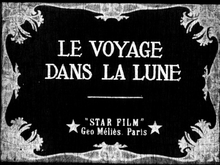 Story of movie Le Voyage Dans La Lune :
Story of movie Le Voyage Dans La Lune : 